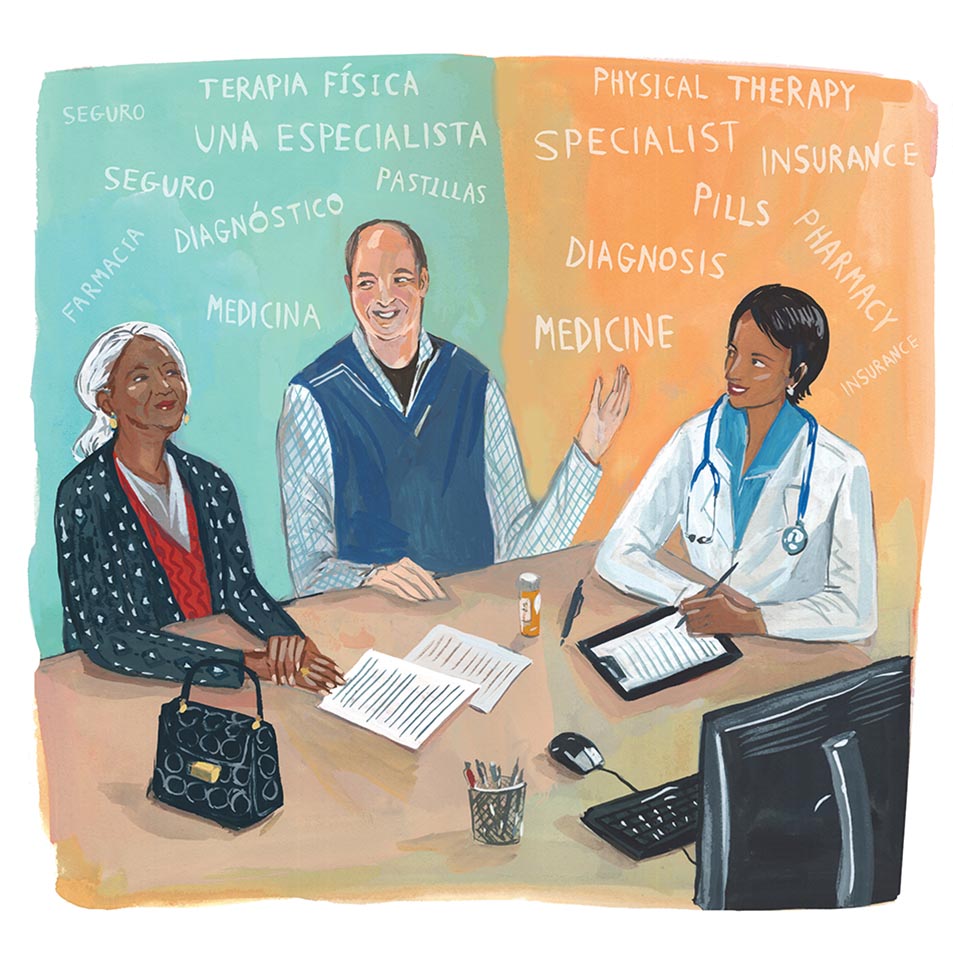
A woman’s face is elated as an ultrasound tech waves the wand over her pregnant belly, explaining the baby’s anatomy on the screen at their side. “Those are always cheerful appointments,” says Gary Martenson ’95.
An hour later, a man’s face falls as a doctor explains a late-stage cancer diagnosis, followed by a long list of next steps. “I have to coach myself through those situations,” Martenson says. “This is a little heavy, and this is a little difficult, but I want to help them through the moment as I can.”
Whether it’s a time of great joy or pain, as an interpreter, Martenson is by the patient’s side, ready to explain what’s happening. “I can’t be with them 24 hours a day, but I can help them while they’re speaking with the doctor about some pretty serious things,” he says.
For Martenson, the inspiration for helping others communicate dates back to his time abroad. Martenson’s communication work started long ago when he moved to Japan to teach English as a second language (he took Japanese, French, and Spanish courses at Colgate). Then, he earned a bilingual MBA from Escuela Superior de la Administración y Dirección de Empresas in Barcelona, where he became a near-native Spanish speaker. “Let’s just put it this way: I’ve been the foreigner in the other country many times,” he says.
He eventually moved back to the United States, where he tried out different jobs with foreign language components, but none that focused on work he was passionate about. “It was like project management plus interpretation, or sales plus translations, some sort of combination like that,” he says. (Note: The difference between translation and interpretation lies in the medium. Translation is written, while interpretation is spoken.)
In 2006, Martenson relocated to his hometown of Fort Wayne, Ind., to be closer to his parents. He was in between jobs, so he decided to get formal training in interpretation and enrolled in a course at Purdue University. “It brought everything together,” he says.
Now, Martenson owns his own translation and interpretation business, In Current Parlance. A day at work could mean spending hours at his desk translating a legal document from Catalan to English. Or, it could mean interpreting for an Indiana Department of Child Services investigator interviewing a child about a sensitive subject — “There is a lot of ‘stuff’ to work through in those scenarios … but I persevere because I know they are important,” he notes.
The majority of Martenson’s work comes from insurance companies or health care networks hiring him to provide interpretation in hospital settings. He was working overtime in year two of the COVID-19 pandemic when the Indiana State Department of Health, in partnership with FEMA, hired him to interpret at vaccination clinics. “I have a skill for Spanish, so I’m happy if I can use it in my work and help people,” he says.
That act of service is what gets Martenson out of bed every day. “I am getting to know a lot of people in an intensely personal way,” he says. “Sometimes, it’s only for a few minutes, sometimes, it’s for a sequence of appointments, but I get to learn a lot of stuff, good and bad.”
